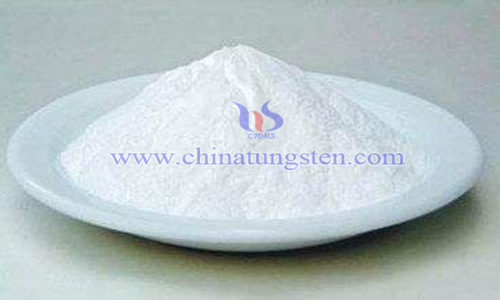Staged Synthesis of High-purity Nano Bismuth Tungstate
- Details
- Category: Tungsten Information
- Published on Friday, 02 August 2019 13:30
Photocatalytic reactions can degrade almost all organic contaminants such as alkanes, halogenated alkanes, alcohols, carboxylic acids, alkenes, aromatic hydrocarbons, halogenated aromatic compounds, polymers, insecticides, herbicides, dyes and brominated flame retardants. Contaminants such as disinfection by-products. Therefore, photocatalysis technology is considered to be an ideal new technology for environmental management and a most promising means of controlling environmental pollution.
Conventional TiO2 photocatalysts mainly absorb ultraviolet light and have low utilization of sunlight. Bismuth tungstate (Bi2WO6) is a visible light semiconductor catalyst that has attracted much attention in recent years and has good photocatalytic activity under visible light. Bi2WO6can effectively degrade organic pollutants (RhB, phenol, acetaldehyde, antibiotics, etc.) under visible light, and can also effectively use CO2 and water to generate fuel under catalysis.

At present, It is mainly prepared by solid-phase reaction of bismuth oxide and tungsten oxide, or prepared by coprecipitation method, sol-gel method or hydrothermal method using cerium nitrate and sodium tungstate as raw materials. These methods has a limiet of low purity, high reaction temperature or difficult to control grain size. In order to overcome the above problems, some scholars have used solvent method and hydrothermal method to synthesize bismuth tungstate in stages. The specific contents are as follows:
1) Dissolve 10 mmol of lanthanum nitrate and 30 mmol of glycerin in 200 ml of isopropanol, stir to obtain a clear liquid, transfer the solution to an autoclave with a volume of 250 ml, raise the temperature to 160 ° C and keep it for 6 hours; To room temperature, filter and wash the filter cake 3 times with isopropyl alcohol, and then dry the filter cake at 80 ° C for 12 hours to obtain glycerin powder;
2) Take 10mmol of sodium tungstate dissolved in 100ml of deionized water to prepare a uniform aqueous solution of sodium tungstate, then add 9mmol of glycerol hydrazine to it, stir vigorously to disperse the glycerin, and adjust the pH of the solution system to 0- with nitric acid. Between 1, the resulting mixture was transferred to an autoclave having a volume of 200 ml, and the temperature was raised to 180 ° C to keep the reaction for 12 hours. After the heating was stopped, the reaction vessel was cooled to room temperature, filtered, and the filter cake was washed three times with deionized water and ethanol, and the filter cake was dried at 120 ° C for 12 hours to obtain a target product of strontium tungstate nanocrystal powder.
The above process focuses on the synthesis of nonionic glycerol ruthenium complexes by solvothermal reaction, and the second step of hydrothermal reaction step, using the Kirkendall effect to gradually complete the preparation process of nano-tungstate, avoiding the precipitation of conventional inorganic salts. The speed is too fast, the particle growth is uneven, and the obtained grain size is not uniform, and at the same time, less inorganic impurities are introduced, so that the prepared product barium tungstate has higher purity.
After testing, the obtained bismuth tungstate nanochip powder has a purity of more than 99% and an average particle diameter of 30 nm. At a concentration of 1.0 g/L, Rhodamine B with a concentration of 0.01 g/L can be completely degraded within 60 min under visible light irradiation.
- Tungsten Oxide Manufacturer & Supplier, Chinatungsten Online: www.tungsten-oxide.com
- Tungsten News & Prices of China Tungsten Industry Association: www.ctia.com.cn
- Molybdenum News & Price: news.molybdenum.com.cn
- Tel.: 86 592 5129696; Fax: 86 592 5129797; Email: sales@chinatungsten.com



 sales@chinatungsten.com
sales@chinatungsten.com